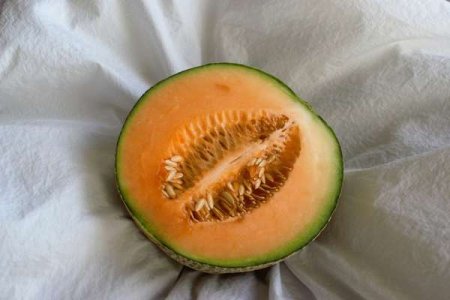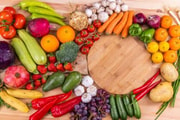
Ever bite into a strawberry in winter and wonder where all the flavor went? Or pay top dollar for tomatoes that taste more like water than sunshine? You’re not imagining things—out-of-season fruits and vegetables often come with a higher price tag and a serious drop in taste.
That’s because they’re usually shipped from far away, picked too early, or grown in artificial conditions just to meet year-round demand. The result? Less flavor, more cost, and a whole lot of disappointment.
If you’re looking to save money and savor every bite, knowing what produce to skip when it’s out of season is a game-changer.
Why does seasonality matter?
When fruits and vegetables are in season, they ripen naturally under the sun, gaining their best flavor, color, and nutrients right on the vine or tree. But when they’re out of season, they’re often harvested too early to endure long-distance shipping, and then forced to ripen with the help of chemicals.
The outcome? Produce that may look fresh but often tastes dull, offers fewer nutrients, and can come with a higher price tag thanks to added transport and storage costs.
The dirty dozen: 13 fruits and vegetables to avoid out of season
1. Tomatoes
Nothing beats a late-summer tomato—ripe, juicy, and full of flavor. But in winter? You’ll likely end up with firm, pale tomatoes bred more for shelf life than taste.
When possible, wait for local, seasonal tomatoes or use canned ones for cooking.
2. Peaches (and other stone fruits)
Peaches, nectarines, plums, and apricots shine from late spring through summer. Off-season, they’re often picked too soon and miss out on their natural sweetness.
If you’re craving them in colder months, go for frozen or jarred options.
3. Cantaloupe

A summer cantaloupe is fragrant and sweet. Out of season, it tends to be bland, watery, and firm. Look for a fruity aroma and a heavy feel when buying in season.
Otherwise, canned versions are a better bet.
4. Raspberries and blackberries
These fragile berries are best in summer. When out of season, they’re often dull in flavor and texture due to early harvesting and long shipping times.
Frozen berries work well in smoothies and baked goods.
5. Corn
Fresh sweet corn peaks from late spring to early fall. Outside that window, its sugars convert to starch, leaving it chewy and bland.
Frozen or canned corn is a solid alternative when fresh corn isn’t in season.
6. Pineapple
Pineapples are available year-round, but they’re at their sweetest from March to July. Off-season ones are often picked early and can taste sour or feel tough.
Choose pineapples with a sweet scent and slight softness at the base.
7. Asparagus

Spring is prime time for asparagus—tender and flavorful. Out of season, it can be fibrous and bitter.
Frozen asparagus is a good substitute when fresh isn’t at its best.
8. Watermelon
Watermelon is a summer favorite, but when it’s out of season, it’s often pale and watery. In-season melons should have a creamy yellow spot and sound hollow when tapped.
9. Oranges and other citrus
Citrus fruits are freshest and juiciest in winter and early spring. Off-season, they can be dry and bland.
For the best taste, stick to locally grown citrus during peak months.
10. Strawberries

Strawberries are sweetest in late spring and early summer. Out of season, they’re often underripe and watery.
If you buy them anyway, let them warm to room temperature before eating—or use frozen ones for better flavor.
11. Spinach
Spinach thrives in cooler seasons like fall and spring. When it’s out of season, it loses nutrients quickly during transport.
Frozen spinach is a great option since it’s preserved at peak freshness.
12. Rhubarb
Rhubarb is best from April to June. Off-season stalks can be tough and bitter, and may contain more oxalic acid.
Look for firm, brightly colored stalks and avoid any that look wilted or brown.
13. Butternut Squash
Butternut squash is a cold-weather staple. If you find it in spring or summer, it may have been stored too long, affecting taste and texture.
Buy it fresh in fall and keep it in a cool, dry spot—or freeze it for later.
How to shop smarter: Tips for seniors
For older adults looking to stretch their budget and enjoy meals that truly satisfy, timing matters.
Buying fruits and vegetables in season means better flavor, fewer disappointments, and smarter spending.
- Learn what’s in season: Get familiar with the seasonal produce in your area. Grocery stores and farmers’ markets often highlight this, or you can find reliable guides online.
- Choose local options: Locally grown fruits and vegetables travel shorter distances, which means they’re usually fresher and more flavorful.
- Go for frozen or canned: When your favorite produce isn’t in season, frozen or canned versions are great alternatives—they’re typically harvested at peak ripeness and retain both taste and nutrients.
- Trust your senses: Give your produce a sniff, a gentle squeeze, and a good look. If something seems off, it probably is.
- Meal plan with the seasons: Build your weekly meals around what’s currently in season to enjoy better flavor and stretch your grocery budget.
While it’s tempting to buy your favorite fruits and vegetables all year round, waiting for the right season can make a world of difference to your taste buds, your health, and your wallet. Plus, eating seasonally supports local farmers and reduces your carbon footprint—a win-win!
Have you had a disappointing experience with out-of-season produce, or do you have tips for making the most of what’s available? Share your stories and advice in the comments below—we’d love to hear from you!






